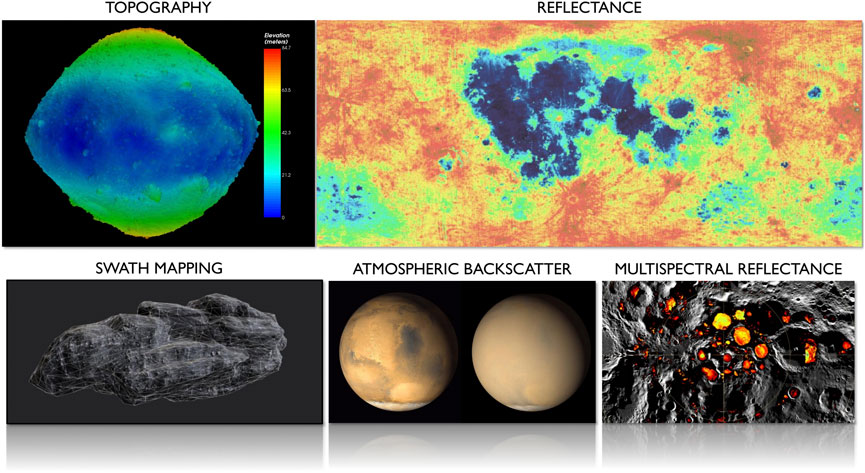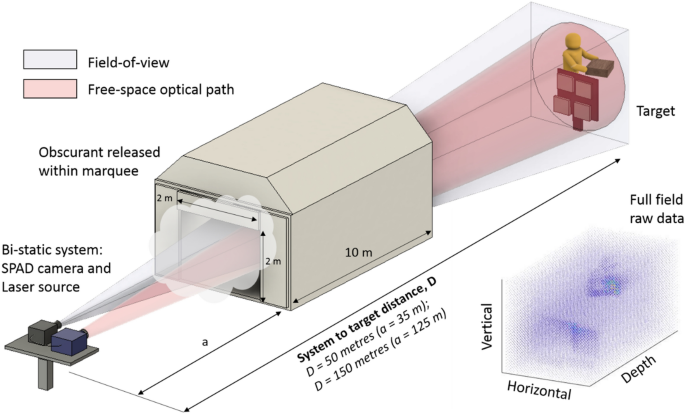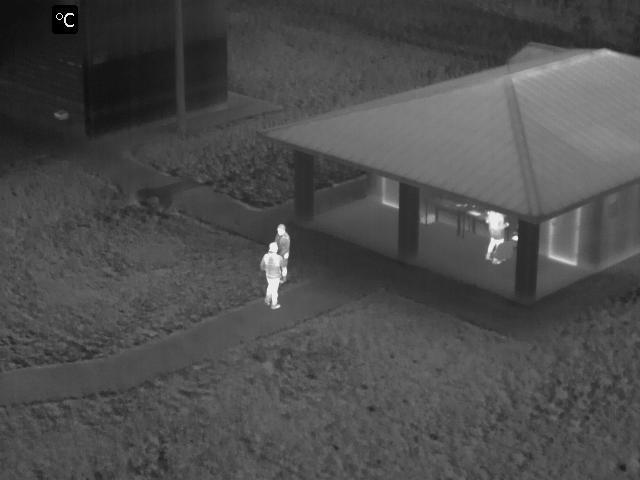For decades, the concept of a security gadget was simple: a camera that recorded, a sensor that tripped, an alarm that blared. These systems were largely reactive, documenting events after they occurred. Today, we stand at the precipice of a monumental shift, a transformation driven by the powerful convergence of artificial intelligence and a new generation of advanced sensors. This is no mere incremental upgrade; it’s a complete reimagining of what security means. The latest wave of AI Security Gadgets News is filled with devices that don’t just see—they perceive, understand, and even predict. By integrating technologies like LiDAR, thermal imaging, and millimeter-wave radar, security systems are moving beyond the visible spectrum to build a rich, multi-dimensional understanding of their environment. This article delves into this exciting frontier, exploring the technologies, applications, and profound implications of a world where our security is managed by gadgets that are becoming truly aware.
The New Sensory Arsenal: AI’s Eyes and Ears in Security
The revolution in security technology begins with a new suite of sensors that capture data far beyond the capabilities of a standard optical camera. These sensors provide the raw, multi-layered information that sophisticated AI algorithms need to make intelligent decisions, dramatically reducing false positives and enabling entirely new security paradigms. This is a central theme in current AI Sensors & IoT News.
LiDAR: Mapping the World in 3D
LiDAR, or Light Detection and Ranging, is a technology that has rapidly moved from niche industrial applications to mainstream consumer electronics. It works by emitting pulses of laser light and measuring the time it takes for the reflections to return. This process allows it to create an incredibly precise, three-dimensional “point cloud” map of its surroundings. Unlike a traditional camera that captures a flat, 2D image, LiDAR understands depth, size, and volume.
In a security context, this is a game-changer. A LiDAR-equipped system can:
- Create Virtual Boundaries: It can establish hyper-accurate digital tripwires that are not fooled by changing light, shadows, or even a spiderweb in front of a lens.
- Differentiate Objects: By analyzing the size and shape of an object in its 3D map, an AI can reliably distinguish between a human, a large dog, a stray cat, or a falling tree branch, virtually eliminating nuisance alerts.
- Operate in Any Light: Since LiDAR provides its own light source, it functions perfectly in pitch-black conditions where a traditional camera would be useless without supplemental infrared illumination. This capability is driving innovation in both Robotics News and Autonomous Vehicles News, where environmental perception is critical.
Thermal and Infrared Imaging: Seeing Heat, Not Light
While LiDAR maps structure, thermal imaging maps heat. Thermal cameras detect the infrared radiation emitted by objects, creating an image based on temperature differences. For security, this means a living being—whether a person or an animal—glows brightly against a cooler background, regardless of the lighting conditions. This technology is a cornerstone of modern AI Monitoring Devices News, allowing AI systems to instantly identify potential intruders hidden in foliage, smoke, or fog, situations where a visual camera would fail.
Radar and mmWave Sensors: Piercing Through Obstacles
Radar (Radio Detection and Ranging) offers another unique sensory capability: the ability to penetrate materials. While security radar can’t see detailed images through solid walls, it can detect motion and presence. A more refined version, millimeter-wave (mmWave) sensing, is becoming a key feature in Smart Home AI News. These sensors can be placed in a room to detect subtle movements, like a person’s breathing, to determine occupancy without using a camera. This provides a powerful, privacy-preserving way to monitor a space, perfect for applications like fall detection for the elderly, a topic gaining traction in AI for Accessibility Devices News.
From Raw Data to Actionable Intelligence: The AI Processing Engine

Having advanced sensors is only half the battle. The raw data they produce—point clouds from LiDAR, heatmaps from thermal cameras, and radio waves from radar—is meaningless without a powerful brain to interpret it. This is where artificial intelligence, particularly machine learning and deep learning, becomes the critical component, turning a flood of data into actionable security insights.
Sensor Fusion: Creating a Cohesive Worldview
The most powerful AI security systems don’t rely on a single sensor. Instead, they employ a technique called “sensor fusion.” This involves combining the data streams from multiple, disparate sensors to build a single, unified, and far more accurate model of reality. A real-world scenario highlights its power:
Imagine a high-security perimeter protected by an autonomous drone, a key topic in Drones & AI News. A standard camera on the drone might detect movement in the bushes (potential false alarm from wind). A thermal sensor confirms a heat signature consistent with a mammal. Simultaneously, a LiDAR sensor maps the object’s 3D shape, confirming it is human-sized and upright. By fusing these three data points, the AI can conclude with near-certainty that a person is present and issue a high-priority alert. This multi-modal approach creates a robust system that is incredibly difficult to fool.
Edge Computing: Intelligence on the Device
In the past, heavy AI processing had to be done in the cloud, introducing latency and privacy concerns. The latest trend highlighted in AI Edge Devices News is the move to edge computing. This involves placing powerful AI chips directly into the security gadgets themselves—the camera, the drone, the sensor hub. The benefits are substantial:
- Speed: Decisions are made in milliseconds, without the delay of sending data to a remote server and waiting for a response. This is crucial for time-sensitive events like detecting an intruder.
- Privacy: Sensitive data, like video feeds from inside your home, can be analyzed locally. The device might only send a simple, anonymized alert to the cloud (e.g., “Human detected, Zone 2”) instead of the raw video stream.
- Reliability: The system continues to function even if the internet connection goes down.
This on-device intelligence is what transforms a simple camera into an entry in the AI-enabled Cameras & Vision News, making it a truly smart, autonomous monitoring tool.
Behavioral Analysis and Predictive Security
The pinnacle of AI in security is the shift from reaction to prediction. By continuously analyzing sensor data over time, machine learning models can establish a “baseline” of normal activity for a given environment. The AI learns the typical comings and goings, the usual times cars pass by, and the regular patterns of movement. It can then flag anomalies—subtle deviations from the norm that might indicate a threat. For example, it could detect a person walking around the perimeter of a property multiple times in the middle of the night or a vehicle parked outside for an unusually long period. This proactive approach allows for intervention before an incident occurs, representing the true future of security.
The Revolution in Action: From Smart Homes to Smart Cities
The fusion of AI and advanced sensors is not a far-off future concept; it’s being deployed today across a wide range of applications, fundamentally changing our relationship with security in personal, commercial, and public spaces.

The Hyper-Aware Smart Home
The next generation of smart home security goes far beyond a doorbell camera. A truly intelligent home will leverage a network of discreet sensors to create a seamless security bubble. Imagine a system where mmWave sensors in each room maintain a privacy-respecting occupancy map. LiDAR at the front door can precisely track a package delivery, noting the object’s dimensions and confirming the courier leaves without approaching other entry points. The home’s AI Assistants News might feature a system that can use directional microphones to verbally challenge an unrecognized individual detected loitering on the property. This holistic approach, a major topic in Smart Home AI News, provides comprehensive coverage without being intrusive.
Securing Public Spaces and Infrastructure
On a larger scale, these technologies are becoming essential for urban safety and critical infrastructure protection. As reported in Smart City / Infrastructure AI Gadgets News, cities are deploying sensor-rich solutions to improve public safety. AI-powered systems can monitor traffic flow for accidents, use acoustic sensors to pinpoint the location of gunshots, and deploy drones with thermal cameras to find missing persons in large parks. For industrial sites, this technology provides robust perimeter security that can distinguish between wildlife and human intruders with unparalleled accuracy, operating 24/7 in any weather condition.
The Personal Security Guardian
These powerful sensors are also being miniaturized and integrated into the devices we carry every day. The AI Phone & Mobile Devices News frequently covers the use of 3D depth sensors (a form of close-range LiDAR) for highly secure facial recognition. Looking forward, we can anticipate developments in Smart Glasses News and AR/VR AI Gadgets News where spatial sensors could provide wearers with “eyes in the back of their head,” subtly alerting them to fast-approaching objects or people outside their field of view. This turns personal tech into a proactive personal security guardian.

Navigating the New Frontier: Balancing Security, Privacy, and Cost
The adoption of these powerful new technologies comes with significant responsibility. While the security benefits are immense, consumers and organizations must navigate a complex landscape of practical and ethical considerations.
Best Practices for Adoption
- Define Your Threat Model: Before investing, clearly define what you are trying to protect against. A multi-thousand-dollar LiDAR-based system is overkill for monitoring a pet, but it might be essential for a remote warehouse.
- Prioritize Privacy by Design: Look for products that champion privacy. Devices that perform on-board processing via AI Edge Devices are inherently more private than those that stream all raw sensor data to the cloud. Scrutinize company data policies and encryption standards.
- Seek Interoperability: A single, powerful gadget is less effective than a network of integrated devices. Choose technologies that can work together within a unified ecosystem to provide layered security.
The Double-Edged Sword: Ethical Pitfalls
With great power comes great responsibility. The very capabilities that make these gadgets so effective also open the door to potential misuse.
- The Privacy Dilemma: The ability of radar to sense presence through walls or for LiDAR to create a detailed 3D map of a private space raises profound privacy questions. Strong regulations and ethical design principles are needed to prevent these tools from becoming instruments of invasive surveillance.
- Algorithmic Bias: AI models are trained on data, and if that data is biased, the AI’s decisions will be too. A security system could potentially be more likely to flag individuals of a certain race or appearance as suspicious, leading to discriminatory outcomes.
- Data Security: The vast and highly personal data collected by these sensors is a tempting target for hackers. A breach could expose not just images, but detailed spatial maps and behavioral patterns of a home or business, making robust cybersecurity non-negotiable.
Conclusion: A Smarter, More Secure Future
We are witnessing a paradigm shift in security technology. The convergence of artificial intelligence with an expanding arsenal of advanced sensors is moving us from a world of passive recording to one of active, intelligent, and even predictive protection. Gadgets equipped with LiDAR, thermal, and radar sensors, all processed by on-device AI, offer a level of awareness and accuracy that was once the stuff of science fiction. From the hyper-aware smart home to the secure smart city, the applications are transforming our ability to safeguard people and property. However, this powerful evolution carries with it a profound duty. As we embrace these new capabilities, we must proceed with caution, championing privacy, demanding transparency, and ensuring that these powerful tools are wielded ethically and responsibly. The future of security is not just about seeing more; it’s about understanding more, and that requires our own intelligence as much as it does the artificial kind.










